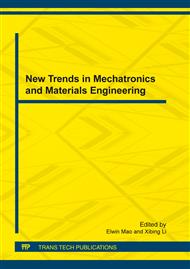p.442
p.446
p.451
p.458
p.463
p.469
p.474
p.480
p.484
System Design of Spindle on High-Precise CNC
Abstract:
With the rapid development of science and technology, Lathe will be sure to develop in the direction of high speed, high precision and high stability as the most basic and important production equipment in industry. The spindle is the one of important component in the lathe, of which static and dynamic characteristics is directly related to the machining precision and machining stability, and the performance of spindle system directly affects the overall machine specifications. Through the analysis of the characteristics of spindle, the ways and means of the spindle analysis are studied. For the requirements of static and dynamic characteristics analysis in the process of spindle design on high-precise CNC lathes hydrostatic, direct-drive spindle motor mode is used. Three-supporting structure is adapted in the layout of spindle bearing in order to improve the accuracy and stability of the spindle drive. The rolling bearing is used in auxiliary support, the front and rear radial bearing is used in master hydrostatic bearing. Thrust bearings are located on both sides of the former type of radial bearing to complete the selection of the spindle material and the design of the structural primary dimensions. It is meaningful to improve the specifications of CNC lathes, guide the design, generation and modification of the high precise CNC lathe and enhance static dynamic characteristics of the spindle and improve accuracy and stability of the machine tool processing.
Info:
Periodical:
Pages:
463-468
Citation:
Online since:
January 2012
Authors:
Price:
Сopyright:
© 2012 Trans Tech Publications Ltd. All Rights Reserved
Share:
Citation:


